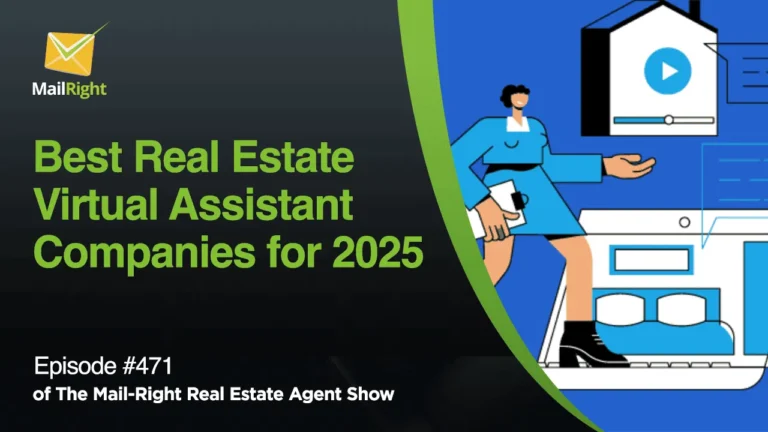On the 370th episode of Mail Right Show, Jonathan Denwood, and Robert Newnan dive into Google Local Guides, the value it can provide to real estate agents, and how to integrate it into your marketing strategy. Robert Newman, the founder, and CEO of the inbound marketing agency Inbound REM has over a decade of experience in the real estate search SEO business. Meanwhile, Jonathan Denwood is the founder and CEO of Mail Right, which builds beautiful WordPress Websites and provides a suite of digital add-on services to get you more quality leads.
As a real estate agent, you must position yourself as the digital mayor in your town, city, or region. Doing so establishes yourself as the go-to person in the field, and implementing this strategy is akin to guerrilla marketing, as it doesn’t take too much time. It can be easily done using your smartphone while moving around, providing increased exposure and visibility. And being a realtor, you can effectively do this through Google Local Guides, where anyone with or without a Google account can sign up, become a local guide, help visitors navigate your local neighborhood, and experience well-hidden secrets that only a resident would know.
Introducing Google Local Guides
Google’s Local Author Profile is a valuable product offered by Google. It attaches value to the content you create under your name using Gmail and considers metrics such as user behavior. This feature serves as a measure of the value and relevance of the content you share.
Google discontinued Google Local Author because it was connected to Google Plus, a service Google mothballed a few years later. However, it’s important to note that discontinuation doesn’t necessarily mean complete removal. Often, Google does mean that they will get rid of it, as was the case with Google Plus, but they kept the pieces of the functionality they liked, and it is like they still need a Google Author profile. Although they have halted signal collection for now, they have expressed intentions to reintegrate this feature in the future. Now Google incorporates Google Author into their local services programming to assess your posts’ content and quality. This shows that Google cares about what you share and how helpful your posts are for people in your local area. They assess how valuable your reviews are when you participate as a local service guide.
Google’s Local Guide: Leverage Reviews and Establish Trust
Anywhere in the Google Ecosphere, having a prominent position in the reviews section of any profile ensures that you rank at the top. This presents an excellent opportunity for individuals who understand the system to get a few 100,000 people to be introduced to you personally, which is made possible through the local service guide feature.
Google is doing the right thing by creating a better ecosystem for us to live in and play in around local services and reviews. When you, as a local guide, leave a review for a business, your review comes up first. Google has implemented a system where reviews from local guides hold more weight, regardless of the number of reviews— if someone has 500 reviews, and none of them are ranked in the local guides category; you will only see a select few, perhaps five or ten, rather than all 500 reviews. Google aims to establish credibility and trust in its local guides by showcasing their contribution as reviewers. For instance, by highlighting a local guide’s extensive record of 50,000 reviews with 50 likes, Google signals to users that this reviewer is trustworthy. Consequently, this trusted local guide’s review is positioned at the top, even when there are 500 other reviews available. In other words, you gain positioning based on your reputation for using local services.
Leaving a review for a business is a very tricky way to get in front of that business’s traffic. So if, for example, you leave a review for a popular attraction like Disneyland, which attracts tens of thousands of visitors daily, you can effectively increase your visibility and potentially reach a substantial audience. And you now have the opportunity to showcase your business with a brief advertisement accompanied by a local services profile. This means potential customers can access and review all the content related to your business. Here’s the catch: you can even leave a review for your business and continue to provide reviews for it.
Brief Overview Between Local SEO and Regional and National SEO
There were some significant differences between local SEO and regional/national SEO. One key difference in local SEO is the continued importance of leveraging directories and trade lists. Numerous directory websites list products and services, and online services like MOSS SEO, for example, offer annual subscription options. By filling out a form on the MOSS SEO website or using their interface, your business information can be automatically distributed to various local directories. Citations, or nap citations, are still employed in local SEO. These terms refer to the directories mentioned earlier.
Google has moved in the direction where they ignore all directories for hyper-local purposes, except ones that are manually verified. This means a real person reviews your business submission to determine its legitimacy, and most of the directories that do that are smaller directories. The only change in the hyper-local regarding technical signals related to directories is that it used to be those big directories like super pages, white pages, and manta. On the other hand, hyper-local directories are all about those lesser-known and managed by small local businesses. Google considers these directories more valuable because they ensure human verification of business submissions. Once your business is verified by another human being in the area, it is added to the directory, which carries weight in Google’s eyes.
From Google Plus to Google My Business: Social Engagement and Local Guides for Realtors
In the most recent round of layoffs at Google, you’ll discover they’re not laying off anybody in their Google Maps division. This division is well-funded and boasts a team of highly experienced software engineers. Furthermore, the division consistently produces groundbreaking innovations inside hyper-local. Google has recognized that the key to driving growth and securing businesses within its search engine lies in these hyper-local profiles.
While some may consider Google Plus a mistake, it was, in fact, a valuable learning opportunity for them. Google realized users were not particularly interested in utilizing their platform as a conventional social media company. However, they also discovered that users strongly associated Google with their businesses and were more than willing to establish business profiles on Google Plus and actively share content. As a result, Google integrated this activity into its primary platform, giving birth to Google My Business.
Now they continue to invest millions, billions of dollars annually, in hyper-local initiatives. It is where the most innovation happens, and Google garners the highest recognition. Google is also increasingly becoming socially engaged. A clear testament to this is the “Guiding Stars 2022” on YouTube, where they magnificently celebrate individuals who contribute significantly to Google. It is an incredible effort that they’re making not only to have people contributing but also to create a community. For business owners, particularly realtors, the potential value of being associated with such recognition is immeasurable. After all, who better than real estate agents to represent a lifestyle? It’s supposed to be real estate agents.
Tips On Effectively Leveraging Google Local Guides
Google is pushing hard for you to incorporate video content into your reviews, and they strongly encourage its use. They now offer rewards, such as extra upload points for videos attached to your review. By utilizing this feature, you can compete with more established reviewers.
Some other tips for you are that writing detailed and comprehensive reviews alongside a couple of pictures is recommended. This entails addressing the essential elements: who, what, why, when, and where of the place you visited. Share why you chose to visit, the timing of your visit, your experiences, and what you consumed or engaged in during your time there. How did you hear about the place? To start with, tell a compelling story in your review because part of what Google looks at is how many views you get and how long people stay on your review—consequently, the better these metrics, the higher the likelihood that the platform will recognize your profile.





